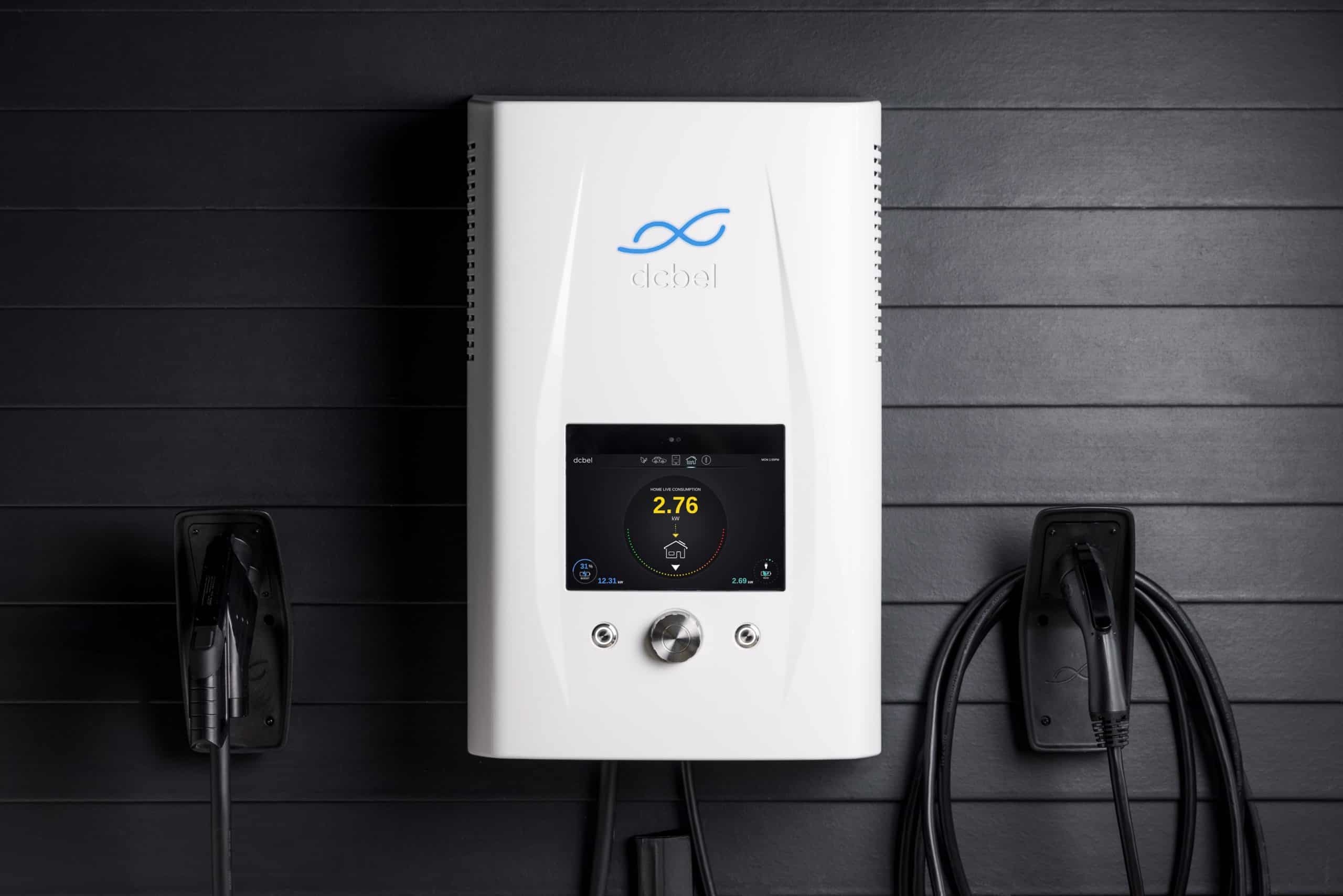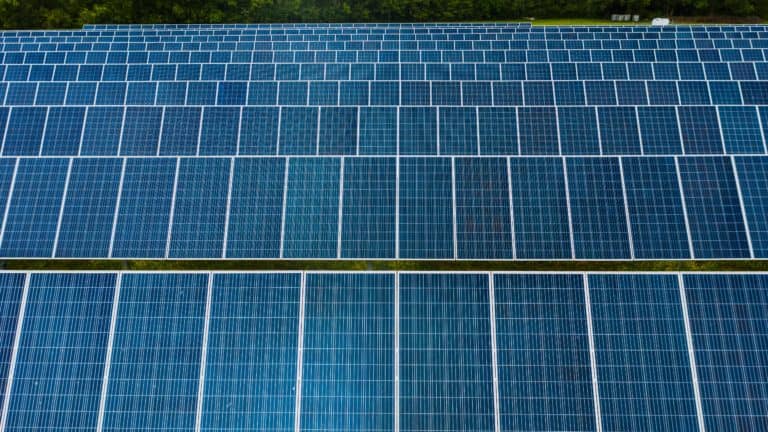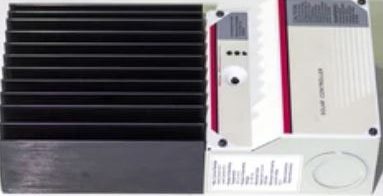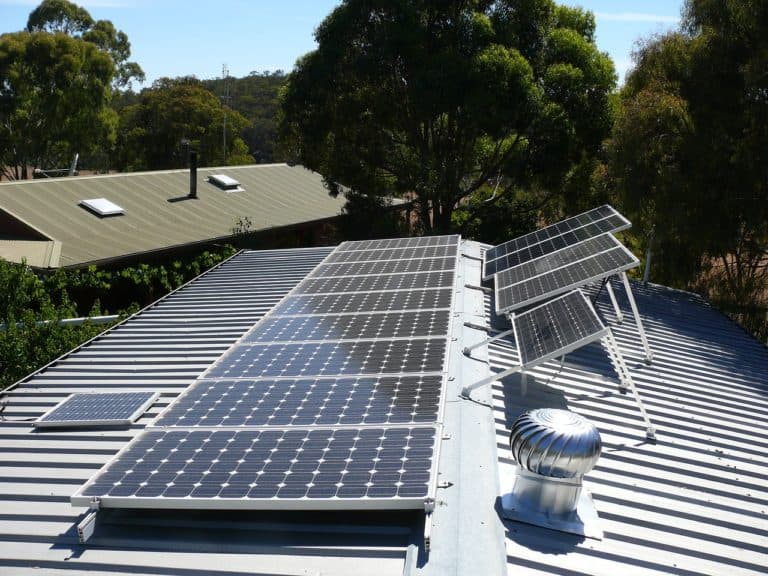Solar inverters: Everything you need to know
Are you looking to learn about solar inverters??? This article will provide you with most of the information you need.
Solar inverters are an important component of solar power systems. They play a crucial role in promoting sustainability through renewable energy sources.
This guide will provide a comprehensive overview of their function, types, sizing and installation considerations for optimal performance and efficiency, cost factors as well as the benefits they offer.
We’ll also discuss the important maintenance requirements that can help ensure maximum efficiency and longevity.
After reading this piece, you’ll come away with informed decisions when buying a suitable solar inverter for your energy needs.
Let’s get started!
What is a solar inverter?
A solar inverter is a device that converts direct current (DC) electricity generated by photovoltaic (PV) or solar panels into alternating current (AC).
The electricity produced can then be used to power electrical appliances and devices in homes and businesses.
This conversion process ensures that the electricity produced by your solar panels can be seamlessly integrated with the existing electrical grid or stored for later use.
Solar panel inverters can maximise the efficiency of your solar energy system.
This is because they are responsible for managing voltage levels and ensuring that your PV array operates at its peak performance throughout varying weather conditions and sunlight exposure.
Some important terms to remember are:
- Direct current (DC): The type of electrical current generated by solar panels; flows continuously in one direction.
- Alternating current (AC): The standard form of electricity used in homes and businesses; reverses direction periodically.
- PV array: A collection of solar panels that are linked together to produce electrical energy.
Solar inverters can also perform other tasks like supplying backup power during grid failures or optimising energy usage according to time-of-use tariffs provided by utility companies.
A PV inverter can assist you in saving money on utility bills.
In the process, your carbon footprint can be reduced by efficiently managing the different aspects of your renewable energy system.
A solar inverter converts the DC output generated by solar panels into AC, which can be used to power appliances and devices. It can maximise the efficiency of a solar energy system and help to save money on utility bills while reducing carbon footprint.
Types of solar inverters
It is important to recognise that solar inverters vary in quality.
Different types of inverters exist, each offering varying features. This must be considered to ensure the chosen model meets your energy production goals.
String inverters
String inverters, also known as central inverters, are the most common type used in residential and commercial solar installations.
Connecting several solar panels in a “string” configuration enables the DC electricity produced by each panel to traverse through the whole system before being changed into AC power by one single string inverter.
The primary advantage of using a string inverter is its cost-effectiveness since it requires only one device for multiple panels.
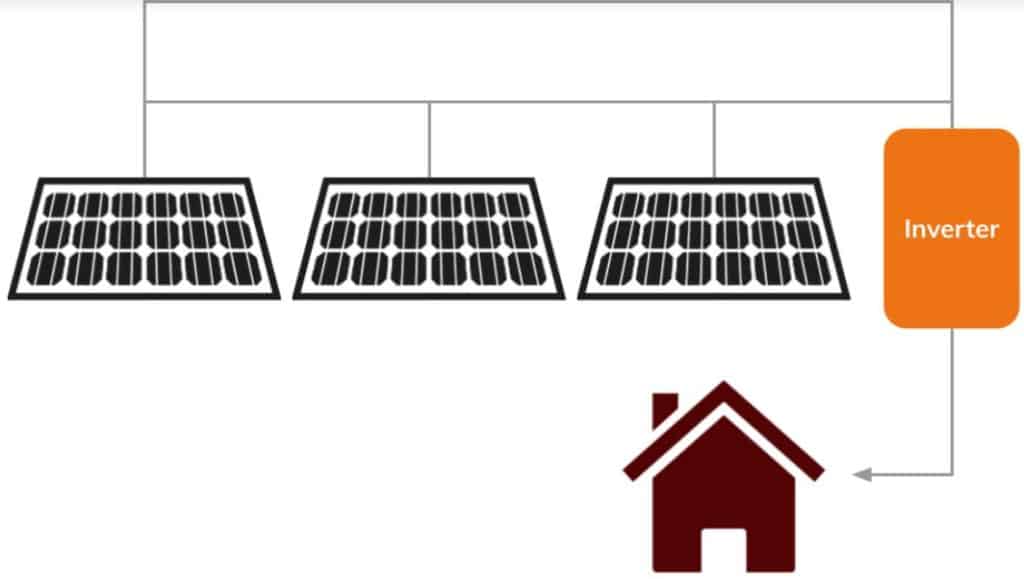
However, there are some drawbacks to this approach:
- If one panel underperforms due to shading or damage, it can affect the performance of all connected panels within that string.
- A larger centralised unit may be less efficient than smaller individual units.
- In case of failure, replacing a single large unit could be more expensive than replacing smaller components.
Micro inverters
Microinverters, on the other hand, are installed directly onto each solar panel, converting DC electricity at the source before it’s combined with output from neighbouring modules.
Hence, they offer greater flexibility and efficiency compared to their string counterparts.
Instead of having one large centralised unit converting DC power from several panels into AC power simultaneously, microinverters attach directly to each PV cell.
This means that every panel has its dedicated converter which operates independently from others within your system.
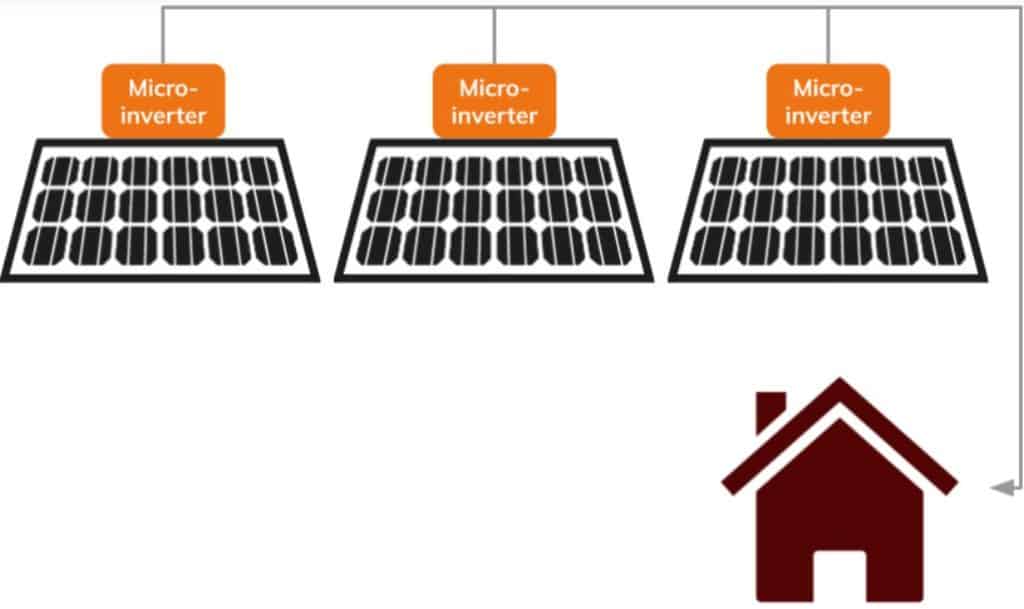
This setup provides several advantages over traditional string inverters:
- Improved efficiency, as each panel’s performance does not affect others in the system.
- Better adaptability to shading or debris on individual panels, ensuring minimal impact on overall energy production.
- Easier troubleshooting and maintenance due to modular design.
However, microinverters tend to be more expensive when compared to string inverters.
In addition, they may require more complex installation procedures and additional wiring components.
Hybrid inverters and power optimisers
Hybrid solar inverters, which combine the features of both string and microinverter systems, are also available.
These devices not only convert DC electricity into AC but also have built-in battery storage capabilities.
This allows for seamless integration with backup power sources during periods of low solar production or grid outages.
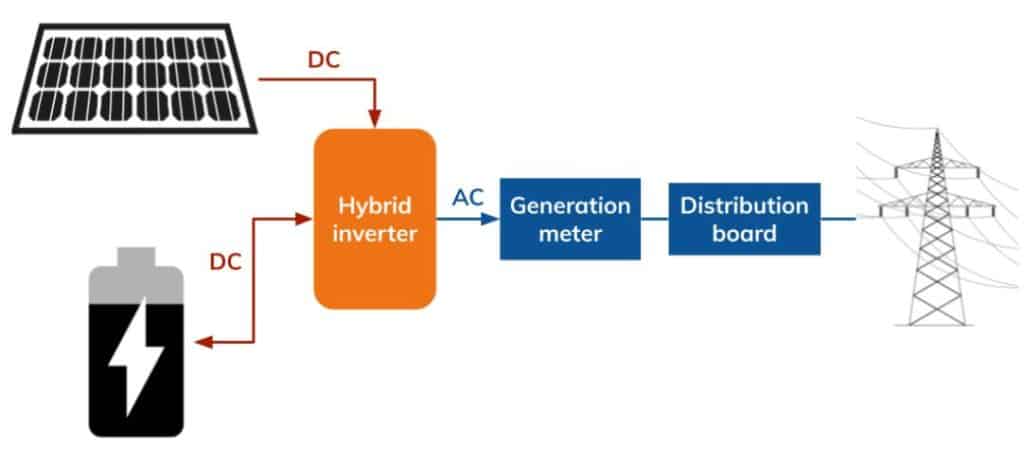
Some systems use power optimisers. These are devices attached at the panel level that maximise output before sending it through a central inverter for conversion.
This approach can provide many benefits associated with microinverter technology while still maintaining cost-effectiveness similar to traditional string inverters.

Solar inverters come in two main types: string and microinverters. String inverters are cost-effective but can be less efficient, while microinverters offer better adaptability and efficiency at a higher upfront cost. Hybrid options that combine the features of both types also exist, such as power optimisers.
Installation considerations
Before you install a solar panel inverter, it is important to consider the different aspects that may affect its efficiency and security.
Size of the system
For a successful installation, the inverter’s capacity must be evaluated to ensure it can handle the total wattage produced by your PV cells.
The total power consumption of your solar array can be calculated by adding up the wattages of each panel.
Once you have this figure, look for an inverter with a compatible input range and a rating slightly higher than your total wattage.
However, if you are not of this slightly technical aspect, please ask for advice from a professional solar installer.
Solar installation experts can ensure that various factors such as shading, temperature fluctuations and local regulations specific to your location are considered.
Roofing material compatibility
Different roofing materials may require specific mounting systems or additional precautions during installation.
For example, metal roofs might necessitate special brackets while clay tiles could demand extra care due to their fragile nature.
It’s essential to work with an experienced installer familiar with various types of roofing materials. These experts can properly secure both panels and inverters on any roof surface.
Local building codes & safety regulations
- Electrical codes: Solar panel inverters must comply with local electrical codes regarding wiring, grounding, and other safety requirements. Make sure you hire a licensed electrician familiar with these regulations for proper installation.
- Zoning laws: Some areas have zoning restrictions related to solar panel installations on residential properties; check local ordinances before proceeding.
- Safety standards: Ensure that all components used meet industry safety standards such as the International Electrotechnical Commission (IEC).
Inverter location & ventilation
Proper ventilation is crucial for solar inverters, as they can generate heat during operation.
Choose a well-ventilated area to install your inverter, preferably away from direct sunlight and moisture.
In addition, ensure there’s enough space around the unit for air circulation and easy access for maintenance purposes.
Professional services
For optimal performance and safety, it’s best to employ a certified expert installer who can size your system correctly.
By so doing they can abide by local regulations, select the right mounting hardware, and ensure secure installation.
Prior to the acquisition, it is essential to evaluate the setup specifications of solar inverters for proper and secure installation.
Maintenance requirements
Regular upkeep is critical for sustaining optimal performance and yielding renewable energy from your solar inverter.
In this section, we will discuss the various maintenance tasks required for a well-functioning solar inverter system.
Cleaning solar panels
Accumulated dust, dirt and debris can reduce the efficiency of your PVs over time; therefore regular cleaning is recommended.
It’s important to clean them regularly – typically every six months or as needed based on local conditions.
You can use a soft brush or cloth with water to gently remove any buildup without damaging the surface of the panels.
Inspection
It’s crucial to inspect all components of your solar inverter system periodically for signs of damage or wear and tear.
This includes checking wires and connections for corrosion, and ensuring that mounting hardware is secure.
Also, ensure to look out for any cracks or other issues with the solar panels themselves.
Maintain proper ventilation
Solar panel inverters generate heat during operation which needs proper ventilation to dissipate effectively.
Ensure that there are no obstructions around the inverter unit such as leaves or debris blocking airflow.
Maintaining adequate space around it helps prevent overheating issues.
How to troubleshoot performance issues
- Error codes: Many modern inverters have built-in diagnostics systems that display error codes when an issue arises within the system. Consult your user manual if you encounter these codes so you know how best to address them.
- Battery health: If using battery storage alongside your solar inverter, it’s essential to monitor the health of your batteries and replace them as needed. This can be done by checking their voltage levels or using a battery monitoring system.
- System performance: Regularly review your solar inverter’s output data to ensure that it is meeting expected energy production targets. If you notice a significant drop in efficiency, consult with a professional for further evaluation.
Schedule professional maintenance
In order to ensure your solar inverter system operates optimally and lasts for its expected lifespan, it is essential to arrange regular check-ups with a qualified technician who can identify any potential issues.
These professionals will have the necessary tools and expertise to diagnose problems accurately and recommend appropriate solutions.
A thorough understanding of the proficiency of the solar inverter is essential when deciding to buy one.
Make sure you’re familiar with all the necessary details beforehand.
Cost factors such as installation costs, operational expenses, and long-term warranties should also be considered when looking into buying a solar inverter.
To ensure optimal performance and longevity of your solar inverter, regular maintenance is essential.
Cost considerations
Several factors affect the cost of a solar inverter, including system size, installation and maintenance costs. Other factors are government incentives and rebates.
In addition, warranties provided by manufacturers are important in ensuring reliable long-term performance.
Size and type of inverter
The size of your solar power system directly impacts the cost of a solar inverter. Larger systems require more powerful inverters to handle higher energy output levels.
Very expensive inverters tend to come with larger systems due to the greater power needs.
For a residential solar panel system, the cost of a regular string inverter usually falls between £500 to £1,000.
The price may vary depending on the size of your system. Meanwhile, microinverters usually have a price range of £100-150 per unit.
To use power optimisers, one needs to invest around £40 per unit. However, an additional expense of approximately £600 is required for purchasing an inverter.
Assuming you have a 3.5 kW solar PV system consisting of ten 350W panels, you would require either £1,000-1,500 to purchase ten microinverters or £1,000 for optimisers worth £400 and an inverter costing £600.
Please note that in most cases, when you purchase solar panels for your home for the first time, the inverter will be included as part of the installation.
Therefore, when you receive quotes for solar panels, the cost of the inverter will already be factored into it.
Hence, there is no need to worry about additional expenses.
Installation costs
In addition to purchasing the solar inverter itself, you’ll need to factor in installation costs when determining overall expenses.
These may include labour fees from professional installers and additional materials required for mounting and wiring components properly within your solar array.
Maintenance costs
- Cleaning: Regular cleaning is essential for maintaining optimal efficiency levels; this may involve hiring professionals or investing time into doing it yourself.
- Damage repair: Over time, wear and tear on panels can lead to decreased performance; repairing damaged panels will incur additional costs.
- Inverter replacement: Solar inverters typically have warranties ranging from five to fifteen years; after this period expires, you may need to replace them at an added expense.
Government incentives
To promote renewable energy sources like solar power, many governments offer incentives to offset the cost of solar panel inverters.
These can include tax credits, grants, or other financial assistance programs. Be sure to research your local area’s available incentives before making a purchase.
When choosing a solar inverter, it’s important to consider factors such as the size of your system, installation costs, maintenance expenses and government incentives.
Manufacturer warranties
A reputable solar inverter manufacturer should provide comprehensive warranties covering parts and labour expenses.
This can involve costs incurred throughout repair and replacement processes necessary after initial installations have been completed successfully.
Some key points about warranty coverage include:
- Warranties for solar inverters can span anywhere from five to twenty-five years, based on the model and producer.
- Ensure that your chosen inverter comes with a solid warranty period. This shows the manufacturer’s confidence in their product’s durability and performance over time.
- Knowing the warranty for your solar inverter is critical. This will help you to be aware of any restrictions or exemptions that may occur during its service life. This will help you prepare financially for potential repair or replacement costs down the line if necessary.
In summary, the type of solar inverter you choose will also impact its overall cost.
For example, microinverters are generally more expensive than string inverters due to their increased efficiency and flexibility.
However, they may provide better long-term value by maximising power generation from each panel within your system.
By taking into account the initial outlay and long-term returns, you can make an informed decision on the best product.
We now turn our attention to choosing an appropriate solar inverter for your needs.
Choosing a solar inverter
When selecting the right solar inverter for your home or business, it is necessary to consider factors such as:
Power output capacity
When selecting a solar inverter, you should consider its power output capacity.
This is determined by calculating the total wattage of all appliances and devices that will be powered by your solar electric system.
This capacity refers to the maximum conversion capability of the inverter from DC to AC at any given moment.
To determine the appropriate size for your needs, calculate the total wattage of all appliances and devices you plan on powering with your solar electric system.
Make sure to choose an inverter with a higher capacity than this figure so that it can handle peak loads without overloading.
Efficiency rating
Solar inverters come with varying levels of efficiency ratings which indicate how effectively they convert DC power generated by PV panels into usable AC electricity.
Look for inverters with high-efficiency ratings (typically above 95%). This does help maximise energy production while minimising losses due to conversion inefficiencies.
Warranty and customer support
A good warranty is essential when investing in a solar inverter, as it provides peace of mind and protection against potential defects or malfunctions.
Look for manufacturers that offer comprehensive warranties (typically 5 to 10 years) along with responsive customer support services.
Compatibility
Ensure that the solar inverter you choose is compatible with other system components such as panels, batteries, and monitoring devices to maximise your setup’s performance.
This will help avoid any issues during installation or operation while also ensuring optimal performance from your entire solar energy setup.
Considering all the elements when deciding on a solar inverter can assist in making choices that fit your requirements.
When choosing a solar inverter, look for high-efficiency ratings (above 95%) and comprehensive warranties (typically 5-10 years) from manufacturers that offer responsive customer support services.
Lifespan & efficiency
The lifespan and efficiency of grid-connected solar inverters are critical components to consider when assessing the efficacy of a solar power system.
The expected range is between 10 to 20 years and at least 93% efficiency.
However, this can vary depending on factors such as quality, installation conditions, and maintenance practices. It’s important to monitor your inverter’s performance regularly and replace it when necessary to ensure that your solar power system continues operating efficiently.
Maintaining high-efficiency rates
A higher efficiency rate means that more electricity is generated from the same amount of sunlight captured by the panels – resulting in lower utility bills and reduced carbon emissions over time.
- Better performance: An efficient inverter ensures maximum conversion of DC (direct current) produced by the panels into usable AC (alternating current) for homes or businesses without significant loss during transmission.
- Economic benefits: By producing more electricity per unit area through increased efficiency, solar power systems become more cost-effective, allowing users to save on energy bills and potentially recoup their initial investment faster.
- Environmental impact: Efficient inverters help reduce greenhouse gas emissions by generating more clean energy from the same amount of sunlight. This contributes to a greener environment and promotes sustainability in the long run.
To maintain high solar inverter efficiency rates throughout your grid-connected inverter’s lifespan, it is essential to choose a reputable manufacturer that offers quality products with reliable performance.
In addition, regular maintenance checks and timely repairs can help prolong the life of your inverter while ensuring optimal efficiency levels are maintained.
Benefits of solar inverters
Solar power inverters play a crucial role in the overall performance and efficiency of your solar energy system.
They offer multiple advantages to both your finances and the environment. Let’s take a closer look at some of these benefits:
Increased energy efficiency
By converting DC power generated by PV into AC power, a solar inverter maximises energy efficiency to enable you to reap the most benefit from your system.
The conversion process of the solar inverter allows for optimised energy utilisation, letting you reap the full benefits of your PV array.
Lower electricity bills
By harnessing the sun’s energy through PV cells, solar inverters help reduce dependency on traditional electricity sources like fossil fuels or nuclear power plants.
Installing solar systems with effective inverters can lead to substantial savings on electricity bills for homeowners.
Reduced environmental impact
- Emission reduction: Solar energy is clean and renewable, meaning it doesn’t produce harmful greenhouse gas emissions like burning coal or natural gas does.
- Fossil fuel conservation: By using sunlight as an alternative source for electricity generation, we can conserve our planet’s finite supply of fossil fuels for future generations.
- No water pollution: Unlike conventional power plants that require large amounts of water for cooling purposes – leading to potential contamination risks – solar systems don’t contribute to water pollution issues.
Improved grid stability
In addition to reducing environmental impact, solar inverters can also contribute to improved grid stability.
By generating and feeding electricity back into the power grid during peak hours, solar systems help reduce the overall demand for traditional energy sources.
This not only lessens the strain on ageing infrastructure but also reduces the risk of blackouts or brownouts.
Increased property value
Investing in a solar energy system with an efficient inverter can potentially increase your property’s value.
As more homebuyers prioritise sustainability and long-term savings, properties equipped with PV panels are becoming increasingly attractive in today’s real estate market.
In summary, incorporating a high-quality solar inverter into your renewable energy setup offers numerous benefits that promote both financial savings and environmental stewardship.
By making this smart investment, you’re taking an important step towards promoting sustainability for yourself and future generations.
Solar inverters are crucial for converting DC power generated by solar panels into AC power, increasing energy efficiency and reducing electricity bills. They also have a positive impact on the environment by reducing emissions and contributing to improved grid stability, while potentially increasing property value.
Wrapping up
After reading this article, you should now have a better understanding of what solar inverters are and the benefits they provide.
You should now be aware of the varieties, setup requirements, upkeep demands, costs and how to select the right one for your necessities when it comes to solar inverters.
This guide has provided sufficient information for anyone interested in promoting sustainability and reducing their carbon footprint.
By investing in a high-quality solar inverter from solar providers, you can help reduce your reliance on fossil fuels while enjoying significant savings on your energy bills.
FAQs
What you need to know about solar inverters
Solar inverters are essential components of a solar energy system, converting direct current (DC) generated by PV panels into alternating current (AC) used by household appliances and the grid.
They also manage the flow of electricity between the panels, battery storage, and grid connection.
What are the three types of inverters?
The three main types of solar inverters are string inverters, microinverters, and power optimisers. String inverters connect multiple panels in series or parallel.
Microinverters convert DC to AC at each panel individually
Power optimizers combine features from both string and microinverters for increased efficiency.
What type of inverter is best for solar?
The best type of inverter depends on your specific needs and installation conditions.
Microinverters offer higher efficiency but can be more expensive than string inverters.
Power optimizers provide an optimal balance between cost-effectiveness and performance improvement when shading or complex roof layouts exist.
What is the life expectancy of a solar inverter?
A typical high-quality solar inverter has a life expectancy ranging from 10-15 years. However, some premium models may last up to 20 years with proper maintenance practices such as regular cleaning and monitoring for potential issues like overheating or component failure.
